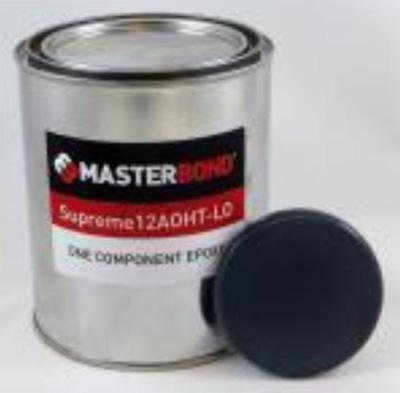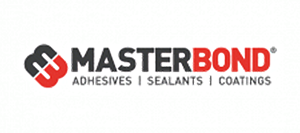
Master Bond Supreme 12AOHT-LO is a one component epoxy for a variety of bonding and sealing applications in the aerospace, electronic, electro-optic and OEM industries. This system fully passes ASTM E595 testing for NASA low outgassing and is well suited for vacuum environments.
As a toughened epoxy, Supreme 12AOHT-LO resists rigorous thermal cycling and shocks over the wide service temperature range of 4K to +500°F. It offers high thermal conductivity of 9-10 BTU x in/ft2 x hr x°F and is a competent electrical insulator.
It bonds well to an array of substrates including metals, composites, glass, rubbers, ceramics and many plastics. This compound delivers high tensile lap shear, compressive and peel strengths exceeding, 3,500 psi, 22,000 psi and 5-10 pli, respectively. It is dimensionally stable and has low shrinkage upon cure.
Supreme 12AOHT-LO is resistant to a variety of chemicals, particularly to water, oil, fuels and solvents. Supreme 12AOHT-LO is a thixotropic paste with a smooth consistency that is easy to handle. As a single component epoxy, it doesn't require any mixing and offers an "unlimited" working life at room temperature. It cures rapidly at elevated temperatures. This gray colored system can be stored at ambient temperatures, but maximum shelf life is achieved when it is refrigerated at 45-55°F. Supreme 12AOHT-LO is available in syringes, ½ pints, pints, quarts, gallons and 5 gallon containers.
Contact Details
Related Glossary Terms
- Rockwell hardness number ( HR)
Rockwell hardness number ( HR)
Number derived from the net increase in the depth of impression as the load on the indenter is increased from a fixed minor load to a major load and then returned to the minor load. The Rockwell hardness number is always quoted with a scale symbol representing the indenter, load and dial used. Rockwell A scale is used in connection with carbide cutting tools. Rockwell B and C scales are used in connection with workpiece materials.
- ceramics
ceramics
Cutting tool materials based on aluminum oxide and silicon nitride. Ceramic tools can withstand higher cutting speeds than cemented carbide tools when machining hardened steels, cast irons and high-temperature alloys.
- composites
composites
Materials composed of different elements, with one element normally embedded in another, held together by a compatible binder.

